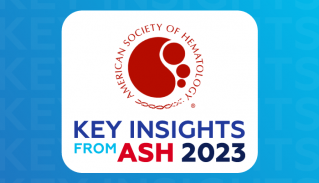
How To Improve Patient Recruitment in Clinical Trials?
A recipe for conducting a successful clinical trial has many important ingredients, but patient recruitment dwarfs them all. Finding, attracting, and retaining study subjects are all arduous tasks, fraught with multiple challenges.
If you have been struggling with finding the right strategies on how to improve patient recruitment and are looking for a fresh perspective, this article may help.
Background – current state of affairs
Patient recruitment is one of the most difficult and time-consuming parts of clinical research. While there is an overabundance of proposed strategies on how to meet the recruitment timelines, it can be challenging to separate the good from the bad.
Since the Lasagna’s Law was first formulated over 40 years ago, not much has changed. Currently, approximately 90% of clinical trials encounter severe delays because of problems with patient recruitment, and 11% of clinical research centers fail to recruit even a single subject. A recent study has found that insufficient recruitment was the primary reason behind the discontinuation of over 76% of clinical trials. Another study that analyzed all registered trials reported that 19% of them were abandoned early due to insufficient subject enrollment.
Major reasons for poor recruitment into clinical trials
Lasagna’s Law teaches us about significant patient-centric barriers to recruitment, which include general patient reluctance to participating in clinical trials, patients’ unwillingness to undergo invasive medical tests and procedures, lack of awareness of clinical trials among eligible populations, and difficulty in retaining patients who require more intense follow up (those with complex conditions who use multiple health care services). Moreover, Lasagna’s Law postulates that patients’ interest diminishes over time.
Some other notable reasons for poor patient recruitment include:
Difficult trial logistics
An analogous problem arises from difficult logistical requirements: patients are often required to make multiple trips to the site for which patients must take time off work, sometimes there are too many appointments scheduled over a short period of time, too many tests and procedures, too many forms and questionnaires to fill out. Conversely, the intervals between appointments or procedures could be too long, etc.
Investigators’ low enthusiasm based on poorly written protocols translates into low patient engagement efforts
A study protocol is a detailed roadmap of a clinical trial, and it should be written in a way that is easy to understand and to adhere to. The protocol should provide clear information about the study and its requirements, so that the investigators can make informed decisions about whether they can commit to it. Investigators should also be convinced that participation in the trial has a high chance of benefiting their patients. They should also understand how a given trial will advance the science in their field of medicine. Thus, it is usually much easier to entice investigators with a trial that studies a novel molecule with an exciting mechanism of action.
Poorly written protocols can make it difficult for investigators to understand the goals of a clinical trial. When investigators cannot clearly articulate the proposed benefits of a trial, patient recruitment becomes much more difficult.
The best way to ensure that your protocol is well written is by hiring expert medical writers with experience in the selected therapeutic indication. These professionals can have a tremendous impact on the usability of the protocol, allowing the trial to progress smoothly and efficiently.
Overpromises by sites
When sites over-promise to patients, they set themselves up to fail. Misleading direct-to-patient advertising about benefits associated with trial participation (e.g., flexible scheduling hours and red-carpet service) can be very enticing. However, inability to deliver on such stipulated benefits causes a great deal of disappointment and often results in poor participation or in discontinuation. Thus, instead of promising unattainable incentives to potential trial participants, sites should be realistic about their capabilities and be transparent with their patients who can then decide if the trial is right for them based on well-defined parameters.
Strict Inclusion/Exclusion Criteria
Finding eligible participants for your study may be more challenging if your eligibility requirements are too strict. It is important to critically assess eligibility criteria that are unrelated to participant’s safety or have no impact on the main research objectives. These requirements should be identified and removed. Having strict eligibility may negatively impact diversity and inclusion in your trial.
In general, there is little scientific support for several popular exclusions, such as the exclusion of people who are overweight, have certain organ dysfunctions, and are HIV positive. Reaching a more varied patient group by expanding eligibility can have a remarkable effect on recruitment.
Expertise and Experience – Investigators’ and clinical team’s competencies are critical to the success of a clinical trial. It is essential to understand if the site is lacking proper training or experience and to provide additional support in the form of meetings with the Principal Investigator, with sponsor’s clinical team, proposing trial-specific seminars and webinars.
Although a site may be in the best possible location, the recruitment of patients may still be hampered by untrained or inexperienced staff. Working closely with the sites to identify the bottlenecks will help you arrive at an effective remediation plan.
How can poor recruitment be improved?
Trial planning
To ensure effective patient recruitment, it is important to factor in realistic recruitment projections, which are often based on feasibility assessments. It is often the CROs job to provide such projections but having additional help can generate a more objective and complete picture.
Constant and respectful communication with the patients
Designing and planning a trial that considers patient needs is the first step in successfully recruiting patients. This entails considering the patient’s viewpoint throughout the entire process.
Effective communication of a site staff with your target population is critical in identifying, selecting, and retaining patients. Ensure that you have a clear understanding of how the disease in question affects the daily lives of the patients, so that you can tailor your communication accordingly. This will help patients feel more comfortable participating in the trial. If possible, try using an online platform that will allow for easy communication.
Site location
The clinical trial sites’ accessibility to patients, travel distances from home, and patient pools accessible for recruiting, should be carefully assessed.
Trial sponsors know the significance of selecting study locations that have established relationships with patients, and ones that are situated in the areas with a sizable patient population. In metropolitan regions, this is usually straightforward, but engaging with rural locations, or with locations that lack convenient means of transportation, can be challenging.
Generally, patients don’t place as much emphasis on logistical challenges as they do on other trial-related matters. Notwithstanding, patients who have historically been less inclined to participate in research are those with low-income, the elderly, and ethnic minorities. These demographics are more influenced by site accessibility. Hence, providing transportation assistance, or offering virtual site visits, should be considered for these patient groups.
Resources
Adequate funding must be allotted for the trial before it begins so that you can adequately meet your endpoints. Also, instead of solely relying on rescue support, early patient recruitment services can help clinical trials run more efficiently.
You can calculate each site’s expected monthly patient intake using a clinical trial recruitment rate calculator. It is critical to meet the financial expectations of trial sites and investigators in a timely manner, as failure to do so can result in breakdown of effective communication with these important stakeholders.
Review the competitive landscape
Identifying sites that are participating, or plan to participate, in competing trials is one of the key elements of the feasibility assessment process. It may be prudent to forego the sites where competing trials are tapping into the same patient population.
Make sure that IMP supply remains uninterrupted
Interruptions in IMP supply can have a detrimental effect on the trial’s progress, the attitude of clinical trial team, and on patients and investigators. Being able to provide the required treatment on time is critical, and all efforts should take into consideration your IMP manufacturers capacity and a certain backlog of API.
Strategically Effective Outreach
A simple way to significantly improve patient recruitment is by reaching the appropriate audience, with the appropriate message, through the appropriate channels.
Depending on how they are utilized, digital advertisements, conventional advertisements, and social media engagements, can all be used successfully to recruit patients.
Reaching out to referral sites can be a valuable option when recruiting into the rare disease space, where patient recruitment is often a challenge. Creating monthly or quarterly newsletters, that get distributed to referral sites, can serve as a reminder to referring physicians.
What can be done when the recruitment is lagging in the ongoing trial?
When a clinical trial’s recruitment is lagging, there are several things you can do to help your sites.
If this hasn’t been done during pre-trial plannings, ask the sites to identify their referral networks and reach out to outlying physicians who have referred their patients to your active sites in the past.
Depending on the type of trial, it is important to take advantage of all available methods of communication: social media campaigns, regular media campaigns, and web campaigns, engagement with respective patient advocacy groups and foundations. All these methods can help spread awareness about your trial and encourage potential participants to become involved.
What does the future hold in patient recruitment for clinical trials?
COVID-19 has accelerated the shift towards digitalized patient recruitment. With decentralized and hybrid clinical trials becoming more commonplace, access to clinical trials by a broader patient population is inevitable. There have also been major advances in using electronic medical records (EMRs) for patient identification and recruitment. There is also an increasing role of pharmacists and pharmacies, both in terms of patient identification and the popularization of clinical trials. On paper, younger patients respond especially well to social medial awareness campaigns. Companies have recently started to consider using the Metaverse for clinical trial engagement. All these approaches offer clinical trials to patients living in smaller, more rural, communities thus diversifying the sample base. Utilization of virtual visits and electronic tracking technologies should also lead to better adherence and lower drop-out rates.






























